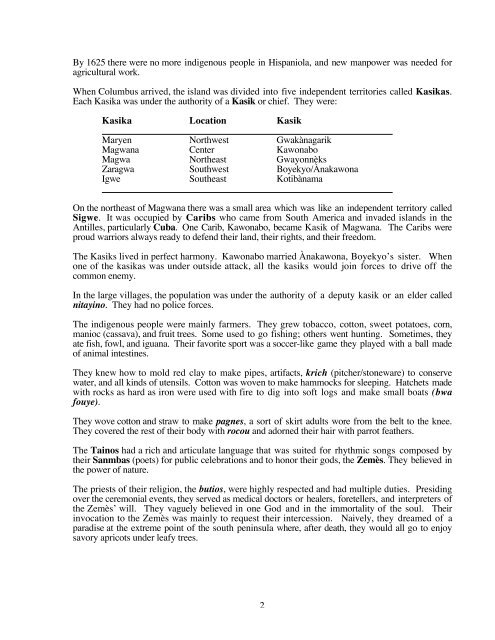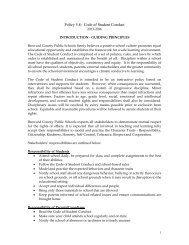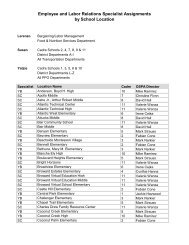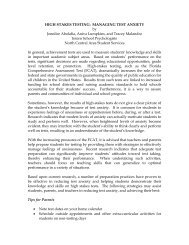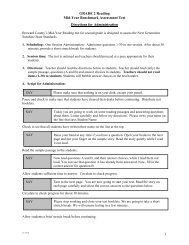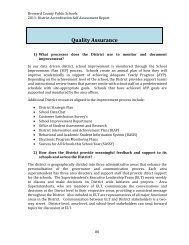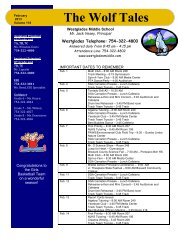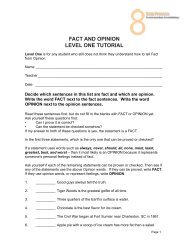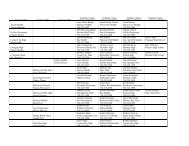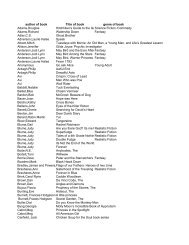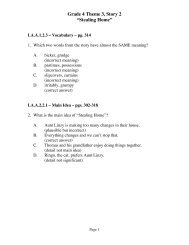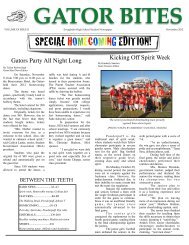Haitian Culture Curriculum Guide
Haitian Culture Curriculum Guide
Haitian Culture Curriculum Guide
You also want an ePaper? Increase the reach of your titles
YUMPU automatically turns print PDFs into web optimized ePapers that Google loves.
By 1625 there were no more indigenous people in Hispaniola, and new manpower was needed for<br />
agricultural work.<br />
When Columbus arrived, the island was divided into five independent territories called Kasikas.<br />
Each Kasika was under the authority of a Kasik or chief. They were:<br />
Kasika Location Kasik<br />
Maryen Northwest Gwakànagarik<br />
Magwana Center Kawonabo<br />
Magwa Northeast Gwayonnèks<br />
Zaragwa Southwest Boyekyo/Ànakawona<br />
Igwe Southeast Kotibànama<br />
On the northeast of Magwana there was a small area which was like an independent territory called<br />
Sigwe. It was occupied by Caribs who came from South America and invaded islands in the<br />
Antilles, particularly Cuba. One Carib, Kawonabo, became Kasik of Magwana. The Caribs were<br />
proud warriors always ready to defend their land, their rights, and their freedom.<br />
The Kasiks lived in perfect harmony. Kawonabo married Ànakawona, Boyekyo’s sister. When<br />
one of the kasikas was under outside attack, all the kasiks would join forces to drive off the<br />
common enemy.<br />
In the large villages, the population was under the authority of a deputy kasik or an elder called<br />
nitayino. They had no police forces.<br />
The indigenous people were mainly farmers. They grew tobacco, cotton, sweet potatoes, corn,<br />
manioc (cassava), and fruit trees. Some used to go fishing; others went hunting. Sometimes, they<br />
ate fish, fowl, and iguana. Their favorite sport was a soccer-like game they played with a ball made<br />
of animal intestines.<br />
They knew how to mold red clay to make pipes, artifacts, krich (pitcher/stoneware) to conserve<br />
water, and all kinds of utensils. Cotton was woven to make hammocks for sleeping. Hatchets made<br />
with rocks as hard as iron were used with fire to dig into soft logs and make small boats (bwa<br />
fouye).<br />
They wove cotton and straw to make pagnes, a sort of skirt adults wore from the belt to the knee.<br />
They covered the rest of their body with rocou and adorned their hair with parrot feathers.<br />
The Tainos had a rich and articulate language that was suited for rhythmic songs composed by<br />
their Sanmbas (poets) for public celebrations and to honor their gods, the Zemès. They believed in<br />
the power of nature.<br />
The priests of their religion, the butios, were highly respected and had multiple duties. Presiding<br />
over the ceremonial events, they served as medical doctors or healers, foretellers, and interpreters of<br />
the Zemès’ will. They vaguely believed in one God and in the immortality of the soul. Their<br />
invocation to the Zemès was mainly to request their intercession. Naively, they dreamed of a<br />
paradise at the extreme point of the south peninsula where, after death, they would all go to enjoy<br />
savory apricots under leafy trees.<br />
2


